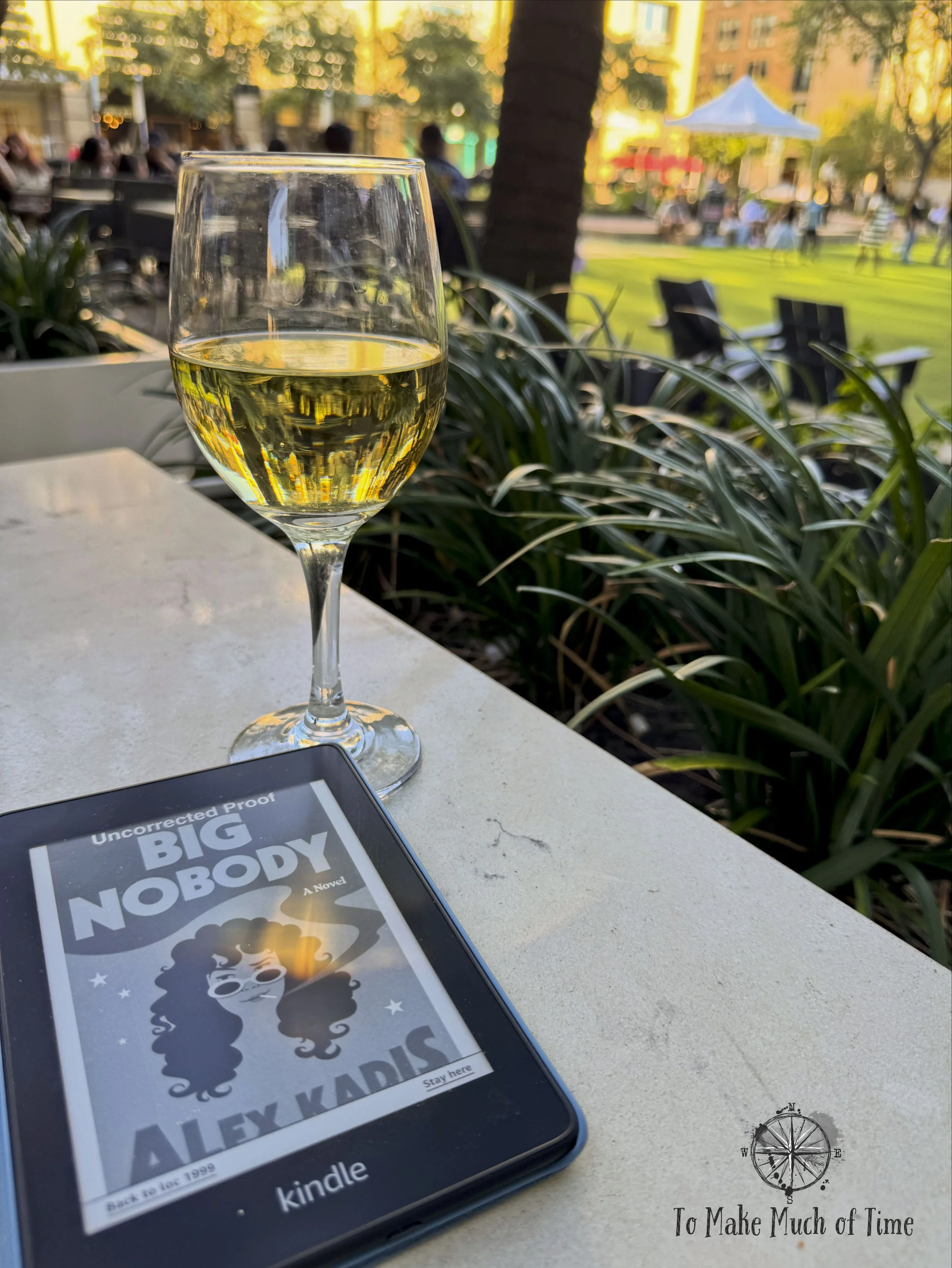Book Review of Big Nobody by Alex Kadis
[Disclosure: This review includes affiliate links. Purchases made through the link provide a small commission to us at no cost to you.]
book stats:
320 pages, to be published on March 10, 2026 (available for pre-order now)
you may enjoy this book if you like:
Coming-of-Age Stories * Greek Novels * Multi-Cultural Novels
travel inspiration:
Both the UK and Cyprus are significant locations represented in the novel.
about the author: Alex kadis
Big Nobody is Alex Kadis’ first novel after a career in music journalism. Like the main character in the novel, Kadis is also half-British and half-Greek and was raised in London. If this inaugural effort is any indication of Kadis’ skill as a writer, I hope she has many more tales in her!
review of big nobody by alex kadis
Big Nobody follows Constance, a half-Greek, half-British adolescence during her coming-of-age era in the late 1970s. We first meet Connie as she struggles to find a way to live with her father, who she blames for the death of her mother and brothers that has occurred in the recent past. She has nicknamed her father The Fat Murderer and has a vivid interior life where she converses with David Bowie and Marc Bolan, whose posters dot her bedroom walls. (I will confess that while I know David Bowie, I did not recognize Marc’s name. Marc was lead of the 70s glam rock band T-Rex, whose most famous hit was ‘Ride a White Swan’. Marc died at the age of 30 in 1977 in a car crash. The date of that crash lines up with events in this novel.)
Not only is Connie struggling with the normal challenges of teenagerhood, further exacerbated by her loss, but she is also a first-generation immigrant who is sandwiched between the expectations of her Greek elders and her Greek peers, who want more than anything to be ‘normal’. As a half-Greek child, Connie feels the extra sting of an outsider who doesn’t fully fit in with other outsiders.
Kadis’ writing beautifully captures Connie’s story – replete with strong imagery, blunt language at the right times, and humor – often sardonic – throughout. Connie comes to life vividly, and her perception of her family and “Greek freak” community makes it easy for the reader to empathize with her plight and her goals. And one of her goals is to kill her father. That may not typically be an easy way to get readers to empathize with a protagonist, but I was on Connie’s side all the way.
Connie has decided the appropriate punishment for her father, who she is utterly repulsed by, is for him to die. She has endlessly creative daydreams about how she could kill him without any suspicion being thrust her way and in an amusing exchange with her science teacher, explores the likelihood of microbes on rotten pork causing serious enough illness to result in death. When Connie determines murder options she thinks are worth attempting, she does. She attempts poisoning through crushed up laburnum seeds, rotten pork, drywall nails stuck into her father’s car tires, and is never successful.
As the novel progresses, it becomes clear that Connie’s anger at her father is more than the misplaced grief of an overly-dramatic teenager. There is a web of multi-generational abuse in the family, Connie’s father has failed to protect her or defend her, and his denial is what has indirectly led to the deaths of her family. Without hitting the reader over the head with it, the novel tackles gender roles within this Greek community during the 1970s and demonstrates just how vulnerable Connie and other girls and women were to the unchecked behavior of boys and men.
Connie isn’t alone. Vasos is a member of the Greek community and Connie’s companion during the ‘Greek freak’ get-togethers. Like Connie, Vas is constrained by expectations of his Greek family and their view of male-ness. Vas enjoys reading poetry, which leads his father to assume he is homosexual. Ultimately, that assumption helps Connie and Vas have the space to develop a relationship that otherwise would have been more tightly controlled. And the moment it becomes clear what they mean to each other is the moment everything falls apart and their families force their separation. But before that, Vas is Connie’s savior. He sees her for who she is and loves her in a way that helps her value herself.
Big Nobody takes place over the course of four specific years. The initial sections of the book occur in 1975, 1976, and 1977 and follow Connie’s teenage years. We then pick back up twenty years later in 2007 when Connie is in her late 40s.
Without giving away this novel’s many twists and turns, the fourth part has some unexpected surprises in a way that provides both closure and a welcome symmetry.
Connie is a survivor of circumstance, culture, and a rough childhood and takes a long road to recovery before she can finally accept that she is somebody and that matters. Throughout the entirety of this novel, I kept thinking of Emily Dickinson’s famous poem, “I’m Nobody! Who are you?” and how nicely it parallels this novel. Because it is short, I’ll reproduce the poem here:
“I’m Nobody! Who are you?
Are you - Nobody - too?
Then there’s a pair of us!
Dont tell! they’d banish us - you know!
How dreary - to be - Somebody!
How public - like a Frog -
To tell your name - the livelong June -
To an admiring Bog!”
While Connie’s story is uniquely and compellingly hers, it is also representative of the journey everyone goes on to figure out who they are in this world.
I highly recommend Alex Kadis’ Big Nobody and hope she has more novels in store!
Click on the image below to save this post to Pinterest!
Check out our other fiction book reviews.








